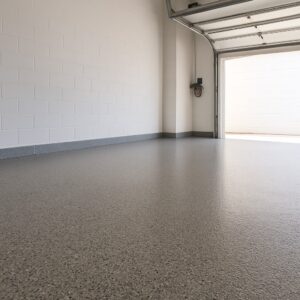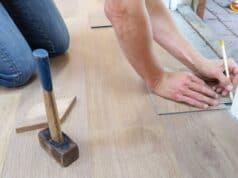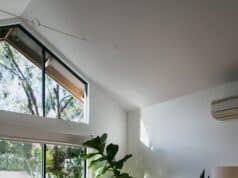Key Takeaways
- Different types of garage floor coatings serve various household needs, balancing cost, performance, and appearance.
- Thorough garage floor preparation is essential for achieving maximum durability and longevity in any coating.
- The ideal floor coating depends on regional weather conditions, how much use a garage gets, and how much one can invest.
- Simple routine maintenance greatly extends the life and appeal of coated garage floors.
- Drawing on the advice and experience of industry professionals helps homeowners steer clear of preventable problems.
Table of Contents
- Why Coat Your Garage Floor?
- Main Types of Garage Floor Coatings
- Surface Preparation Makes All the Difference
- How to Choose the Best Coating for Your Garage
- Steps to a Successful Application
- Maintenance Tips to Extend Floor Life
- Common Mistakes to Avoid
- Future Trends in Garage Floor Coatings
Why Coat Your Garage Floor?
Many homeowners overlook their garage floor when looking to improve their home, but the garage serves as much more than just a parking space—a workshop, a storage area, and sometimes even an entryway. Coating a garage floor provides an essential layer of protection for appearance and the long-term resilience of the concrete underneath. From engine oil leaks to road salt in colder climates, uncoated concrete can rapidly deteriorate. A professional coating acts as a shield, helping prevent costly cracks and stains that can become permanent without intervention. For those interested in upgrading their space, reputable services offer garage epoxy in Baltimore and surrounding areas to ensure both functionality and aesthetics are top-notch.

Beyond protection, floor coatings enhance safety and hygiene. Uncoated floors accumulate dust—which can be tracked through the home—and remain slippery when damp. Homeowners can significantly reduce dust and protect against accidental slips thanks to nonslip finishes by choosing an appropriate coating. Research shows that dust reduction is particularly significant, with some homeowners reporting up to 70% less dust migration after floor coating. Additionally, a polished surface makes everyday cleaning less of a chore and adds a finished look that can increase the property’s perceived value when it’s time to sell.
Main Types of Garage Floor Coatings
- Epoxy: Arguably the most popular choice, epoxy coatings offer a hard, glossy finish that withstands dropped tools, chemical spills, and daily vehicle traffic. They are particularly well-suited for busy households and home mechanics.
- Polyaspartic: With speedy curing times—sometimes less than a day—polyaspartic coatings are perfect for those hurrying to reclaim their garage. These coatings are also highly resistant to ultraviolet light, meaning they won’t yellow over time, even with garage doors left open regularly.
- Polyurethane: This type is prized for its flexibility and toughness. Unlike epoxy, polyurethane tends to flex with concrete, making it an excellent choice for climates with temperature fluctuations or for garages on slabs that experience minor shifts.
- Acrylic Sealers: While they don’t offer quite the same level of durability, acrylic sealers are commonly used by DIY enthusiasts who want a quick and cost-effective upgrade, particularly for low-traffic garages or where appearance is more important than heavy-duty performance.
Choosing the correct type of coating involves more than just considering your budget—it requires a clear understanding of how your garage is used daily. If quick application and fast drying are top priorities, polyaspartic coatings offer a convenient solution. On the other hand, epoxy is often favored for its toughness, making it a solid choice for garages that endure heavy use from vehicles, equipment, or home workout areas. By weighing the pros and cons of each option and researching garage floor coating near me, you can find a local service that delivers both durability and value.
Surface Preparation Makes All the Difference
Even the most advanced coating materials are doomed to fail if they’re not applied to a properly prepared surface. The process starts with a rigorous cleaning to remove old paint, oil, dirt, and other contaminants that can interfere with adhesion. Tools like degreasers, power washers, or sandblasting may be required for older or stained floors. Once clean, it’s crucial to repair chips and cracks, and then physically abrade the floor—usually through grinding or etching—to give the coating a texture to grab onto.
Numerous studies and field reports, including guidance from reputable publications like Family Handyman, emphasize that improper surface preparation is the number one cause of failed floor coatings. Skipping prep steps leads to bubbling, peeling, or uneven color once the coating sets. Investing a few extra hours in prep will pay off in the quality and lifespan of the finished floor—cutting corners in this step can cost far more in rework and disappointment.
How to Choose the Best Coating for Your Garage
- Climate: In regions that experience high humidity or wide temperature swings, such as the Northeast, polyaspartic or polyurethane coatings can prevent problems like bubbling or flaking, which are typical when moisture is trapped during application.
- Budget: The most affordable options, like acrylic sealers, are fast and easy but generally require reapplication every few years. On the other hand, premium choices like epoxy or polyaspartic coatings might have a higher upfront cost, but save money and effort through much greater longevity.
- Usage: If your garage is a car workshop or houses large exercise equipment, prioritize coatings with high abrasion and chemical resistance. Color choices and decorative add-ons like flakes might take precedence in storage spaces or mudrooms.
- Time Constraints: Polyaspartic coatings allow you to use your garage again in less than 24 hours. For those who can afford the wait, epoxy balances performance and cost.
Think of these factors as a personalized checklist—being realistic about your daily routines and plans can help ensure you choose a solution that aligns with how you live. Matching your lifestyle with the performance and durability of the materials available is essential when selecting the best garage floor coatings for your home. Homeowners who take the time to assess their current usage and long-term expectations are far more likely to invest in a flooring option they’ll appreciate and rely on for years.
Steps to a Successful Application
- Clear the garage completely, including shelving units low to the ground. Sweep or power wash to eliminate every trace of dirt and debris.
- Check for cracks, holes, or uneven spots. Patch and repair these before proceeding to ensure a level and stable foundation.
- Choose your prep method: Grinding the concrete is most reliable for intense use, but acid etching can be sufficient for lighter needs. Both increase surface porosity for better coating adhesion.
- Let the floor dry completely, particularly if you’ve used water-based cleaning or etching products; excess moisture is a common source of coating failure.
- Carefully mix the two-part or multi-step coating, following all label guidance for temperature and timing. It’s best to work in batch-by-batch sections to ensure uniform application.
- Apply the coating methodically, using rollers or squeegees for large areas and detail brushes for edges. Many systems require two or three coats for full coverage and depth.
- Observe recommended curing times—never cut corners. Early use before the product sets can leave permanent marks or ruin the finish.
Should you decide to DIY, always wear proper safety gear, including gloves, safety glasses, and a respirator if working with products that have strong fumes. Open windows and doors for ventilation, and ensure pets and children are kept away until curing.
Maintenance Tips to Extend Floor Life
- Regularly sweep or vacuum the floor to prevent abrasive particles from creating microscopic scratches that dull shiny finishes.
- Immediately blot up any oil, grease, or chemical spills—even though resistant, coatings last far longer when spills aren’t left to soak in.
- Give the floor an annual once-over: check for cracks, chips, or worn areas, and perform spot repairs before they become bigger problems.
- Strategically place rubber mats in high-traffic areas or zones where heavy tools might be dropped to reduce wear further.
With most coating systems, these simple habits can keep your floor looking sharp for years. Just as you would with hardwood or tile inside your home, monitoring and reacting quickly to problems ensures the beauty and utility of your garage floor aren’t dimmed by neglect.
Common Mistakes to Avoid
- Underestimating the importance of surface prep—rushed or skipped steps lead directly to peeling, bubbling, or early flaking, which requires total reapplication.
- Applying coatings in less-than-ideal weather can negatively affect adhesion and curing. Too much humidity slows drying, while too much cold can stop chemical reactions mid-process, undermining the whole project.
- Poor mixing is a pervasive issue with two-part and multi-part products. Always read the instructions, mix slowly, and never try to “eyeball” ratios.
- Being impatient and using the garage before the recommended cure time may scuff, dent, or mar a still-curing surface, causing irreparable damage.
Homeowners who pay attention to these pitfalls almost always enjoy a professional-quality outcome, even when tackling the job themselves. The peace of mind from a well-executed project is worth the extra care.
Future Trends in Garage Floor Coatings
As garage spaces are increasingly seen as extensions of the home rather than merely utilitarian, the market for innovative coatings continues to grow. Recent technological advancements have produced eco-friendly, low-VOC products that reduce environmental impact and improve indoor air quality. In addition, slip-resistant additives and antimicrobial options make coated floors safer and more hygienic—a boon for families with small kids or who use the garage as a home gym. Design possibilities are also multiplying, with customizable color flakes, metallic finishes, and even logos or monograms available to create a unique look. According to experts in the field, homeowners now have more opportunities than ever to tailor garage floors to match their personality, enhance utility, and increase property value. Following these trends keeps your home looking sharp and ensures you make lasting choices for years.








